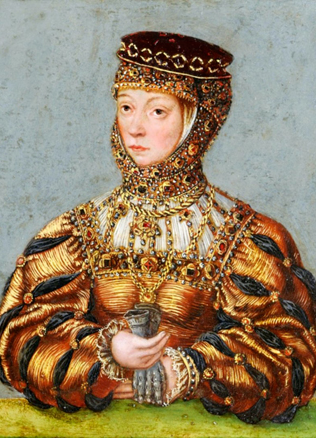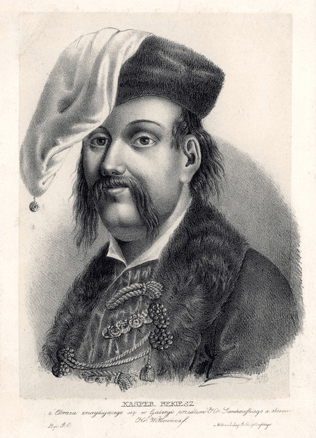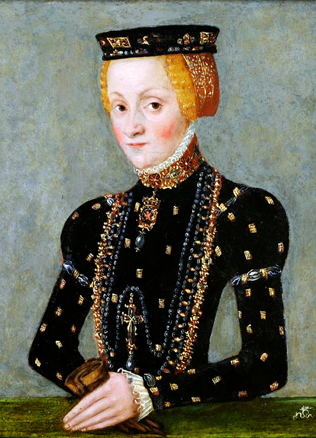“Fraternisation” in Horodło – adopted coats-of-arms and the “real policy”
In 1413, an event that stuck not only in the memory of Lithuania and Poland but also determined the heraldic tradition of the noblemen took place. On 2 October 1413, in Horodło, in the Ukrainian border castle located between Poland and Lithuania, not only unionist commitments of the Poles and the Lithuanians were renewed but also the before unheard of act of fraternisation of the nobilities of the two nations took place.
“
From that time a common sign of the family – the coat-of-arms – had to testify to the solidarity of the Polish and Lithuanian nobility.
47 Polish noblemen gave their coats-of-arms to 47 Lithuanian noblemen: Marshal of the Polish Crown Zbigniew from Brzezina gave his “Zadora” coat-of-arms to Palatine of Trakai Jaunius Valimantaitis, Castellan of Kraków Krystyn from Ostrów „Rawa”– to Vilnius Castellan Mykolas Minigaila, Bishop of Kraków Andrzej Jastrzębiec gave coat-of-arms “Hawk” to Elder of Polots Jonas Nemira, Archbishop of Gniezno Mikołaj Trąba gave the coat-of-arms of „Three Horns” to Kristinas Astikas, the King’s secretary Jan Mężyk gave the coat-of-arms of “Wadwicz“ to Petras Mantigirdaitis, Vice-Chamberlain of Sieradze Jokub from Rogoźno gave the coat-of-arms “Habdanka” to Jonas Goštautas and so on. This campaign was perceived as an adoption – a symbolic admittance of new members to one’s own family. From that time a common sign of the family – the coat-of-arms – had to testify to the solidarity of the Polish and Lithuanian nobility. That was an original idea of Jogaila and Vytautas and their counsellors seeking to bring closer the societies, which, despite the union between them that existed for several decades, were in contact and knew about each other too little.
A disharmonious family of nations
The armorial relationship established in Horodło between the Poles and the Lithuanians survived in the world of signs only. The families of the Lithuanian magnates took over the Polish coats-of-arms and from that time used them: the Astikai and the Radziwiłłs used the Three Horns, the Kęsgailos – Zadora, the Manvydai – Leliwa, the Goštautai – Habdanka. However, this did not strengthen their personal relations. The noblemen who perceived their political significance more and more continued the political trend that became evident in the times of Vytautas when it was sought to develop the independent foreign policy, to preserve the old boundaries of the state (“the boundaries of Vytautas”) and to have a separate Grand Duke. All that led to new disagreements with the Poles.
“
The armorial relationship established in Horodło between the Poles and the Lithuanians survived in the world of signs only.
Do You know?
Grand Duke Švitrigaila refused to drink wine brought from Poland, and the image of “the cunning Poles” appeared in correspondence carries out between the Order and the Lithuanians. In 1453, the Lithuanian envoys, in the presence of the Master of the Order, complained about the Poles that “the latter treat them as serfs and call them subordinates”, whereas “they, as noble people are subordinate and obedient only to the Grand Duke of Lithuania rather than to the Poles”.
Despite common efforts of the rulers from the Jagiellonian family, the relations between the nobility of both countries were establishing slowly and with difficulty. In the 15th century, the Poles were not frequent guests in Lithuania. There were some more of them in the Ruler’s court (clerks) and in the church; however, usually these were only short visits. The most important persons of both lands – the magnates – remained alien to each other. Joint meetings provided for in Horodłp during which different positions had to be coordinated were organised especially rarely. Most often they ended in mutual anger and advance accusations. Marriages between the Polish and Lithuanian nobility that reflected closer relations started to be arranged surprisingly late. Only at the end of the 15th century, nearly 100 years after the beginning of the union, we shall hear about the first marriages between the representatives of the nobility families.
The Polish magnates came regularly to Lithuania with embassies; some of them were famous experts on the relations with the Lithuanians, however, this political communication was not accompanied by any informal communication based on personal relations. This was determined not only by political disagreements. The Polish magnates did not regard the Lithuanians as equal political partners. The famous statement of the Polish chronicler Jan Długosz that it was owing to the Poles that the Lithuanian nobility liberated itself from the shackles of the despotic power of the Grand Duke testifies to the wide-spread arrogant attitude of the Poles towards the power of the nobility of the Grand Duchy of Lithuania.
Mixed marriages and studies in Kraków strengthened fraternity
Nonetheless, the long-lasting rule of Casimir Jagiellonian on the thrones of both states (1440/47–1492) determined the rapprochement of the political elite of Lithuania and Poland. The integrational influence of the court of Kraków was especially significant, the magnates of both countries met and communicated there. Cases of first friendships and marriage kinships between the magnates of the Grand Duchy of Lithuania and Poland are known from that time. The first swallow was the marriage of Alexander, the daughter of Casimir’s courtier, later Chancellor of the Grand Duchy of Lithuania and Palatine of Vilnius Alekna Sudimantaitis (1484) to a representative of the famous Teńczyński magnate family of Poland Minor Mikołaj Teńczyński, which was personally blessed by the Ruler. Another stage in intensifying contacts between the Polish and Lithuanian nobility was the courts of the Grand Duke in Vilnius in the times of Alexander the Jagiellonian in which a large group of noble Polish and Lithuanian noble courtiers was concentrated. These relations between the Poles and the Lithuanians were strengthened even more by a fashion of study trips of the magnates whose routes first of all ran to Kraków. All that did not only determine the improvement in knowledge of the Polish language but also to a more important phenomenon – taking over common political categories and conceptions.
Simultaneously processes in another direction were taking place. As far back as 1447, with the help of Casimir’s privilege the noblemen of the Grand Duchy of Lithuania (as well as of Poland) won the principle of the right of the indigenate (Lat. Ius Indigenatus) that was wide-spread in Europe. According to that principle, secular and spiritual offices had to be filled by the local residents (Lat. indigenes). And in 1492, Alexander’s privilege supplemented this right with the prohibition for the foreigners who married the Lithuanian girls (Poles were kept in mind first of all) to receive holdings in the territory of the Grand Duchy of Lithuania.
Despite legal restrictions and political contradictions, in the first half of the 16th century, contacts between the Lithuanians and the Poles improved. Both countries exchanged regular missions, carried out intensive correspondence, organised common congresses, which grew into common sejms (parliaments). The conceptions and images of a “brother”, “friend” “common welfare” (res publica) spread in the Polish-Lithuanian communication.
“
The conceptions and images of a “brother”, “friend” “common welfare” (res publica) spread in the Polish-Lithuanian communication.
Meantime, in the long run the “horodlian” (Polish) coats-of-arms became established in the Lithuanian noblemen’s heraldry as prestigious signs of the nobility. However, alongside them there were coats-of-arms of a different origin. For example, the Dukes of Alšėnai brought the idea of the coat-of-arms of the Centaur (Hipocentaur) most probably from Novgorod. And some magnates preserved the archaic signs of local origin of linear forms (the example of that is the Arrow of the Dukes of Svyriai).
Rimvydas Petrauskas



